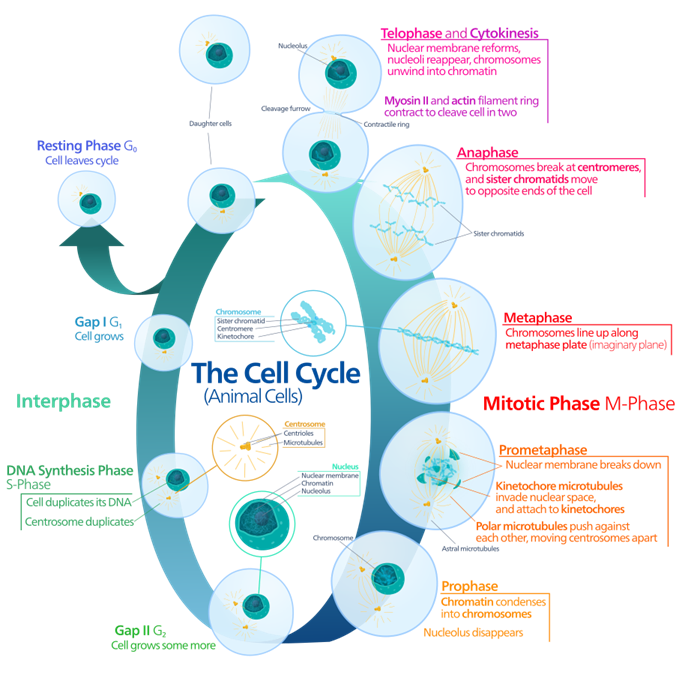PDF chapter test TRY NOW
Points to Remember:
Bivalent: A pair of homologous chromosomes before their duplication in meiosis. It is also called diad.
Cell division: The three types of cell division that occur in animal cells are amitosis (direct division), mitosis (indirect division) and meiosis (reduction division).
Centromere: A structure present in between the chromosomal arms of chromosomes to which the mitotic and meiotic spindle microtubules are attached. It is called kinetochore or primary constriction.
Chiasma: The point of contact and interchange between chromatids of two homologous chromosomes.
Chromatids: One of the two identical longitudinal halves of a chromosome share a common centromere with a sister chromatid.
Chromosome: They are elongated rod-like structures formed during nuclear division. They represent the physical sites of nuclear genes, which are arranged in linear order. Every species has a characteristic number of chromosome.
Crossing over: Process in which genes are exchanged between non-sister chromatids of homologous chromosomes.
Diploid: An individual or cell having twocomplete sets of chromosomes.
Haploid: An individual or cell having a single complete set of chromosome.
Homologous chromosome: Chromosomes are occurring in pairs, one derived from each of the two parents. Each member of such a pair is the homolog of the other.
Interphase: It is the longest resting phase of the cell between two cell divisions.
Synapsis: Pairing of homologous chromosomes occurring in prophase -I of meiosis.
Tetrad: Four haploid cells arising from meiosis formed from four associated chromatids during synapsis.

Animal cell cycle
